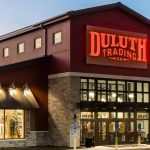Severe winter weather did not dampen December retail sales as shoppers took advantage of heavy promotions and last-minute deals. According to the National Retail Federation, December retail sales, which exclude automobiles, gas stations and restaurants, increased 0.4 percent seasonally adjusted month-to-month, and 4.6 percent unadjusted year-over-year.
Total holiday retail sales, which include November and December sales, increased 3.8 percent to $601.8 billion, which was in line with NRF’s projected forecast of 3.9 percent and $602.1 billion. In addition, non-store holiday sales, which is an indicator of online and e-commerce sales, grew 9.3 percent to $95.7 billion.
“Despite facing a truncated holiday season, severe weather, and shaky consumer confidence, retailers rose to the challenge and executed their strategies with proven success,” NRF President and CEO Matthew Shay said. “Today’s holiday sales numbers are a testament to a resilient industry that knows what their customers want, when they want it and how they want to get it. Considering that retail sales are an important barometer when measuring the overall health of our national economy, this report provides a level of true optimism that the recovery is picking up steam, and once again, retail leads the way.”
December retail sales, released today by the U.S. Census Bureau, which include categories such as automobiles, gasoline stations, and restaurants, increased 0.2 percent seasonally adjusted month-to-month, and 4.1 percent adjusted year-over-year.
“Retail sales have been volatile all year and the holiday shopping season was no exception,” NRF Chief Economist Jack Kleinhenz said. “Solid job growth in the months of October and November led to a more-confident consumer and healthy holiday shopping season for many retailers. While economic and policy uncertainties remain, the economy seems set for steady growth in the New Year.”
“Undoubtedly, some of the increase came at the expense of margin. Retailers are still stressed and a long-term promotional environment may actually hurt the bottom line,” said Kleinhenz. “As consumer confidence grows, there will be less need for retailers to heavily promote and discount their offerings.”
Other findings from the December retail sales report include:
- Building material and garden equipment and supplies dealers stores’ sales decreased 0.4 percent seasonally-adjusted month-to-month yet increased 4.2 percent unadjusted year-over-year.
- Clothing and clothing accessories stores' sales increased 1.8 percent seasonally-adjusted month-to-month and 4.7 percent unadjusted year-over-year.
- Electronics and appliance stores’ sales decreased 2.5 percent seasonally-adjusted month-to-month and 1.5 percent unadjusted year-over-year.
- Furniture and home furnishing stores’ sales decreased 0.4 percent seasonally-adjusted month-to-month yet increased 5.0 percent unadjusted year-over-year.
- General merchandise stores’ sales were flat seasonally-adjusted month-to-month and flat unadjusted year-over-year.
- Health and personal care stores’ sales increased 0.6 seasonally-adjusted month-to-month and 5.9 percent unadjusted year-over-year.
- Nonstore retailers’ sales increased 1.4 percent seasonally-adjusted month-to-month and 14 percent unadjusted year-over-year.
- Sporting goods, hobby, book and music stores’ sales decreased 0.6 percent seasonally-adjusted month-to-month yet increased 5.8 percent unadjusted year-over-year.















